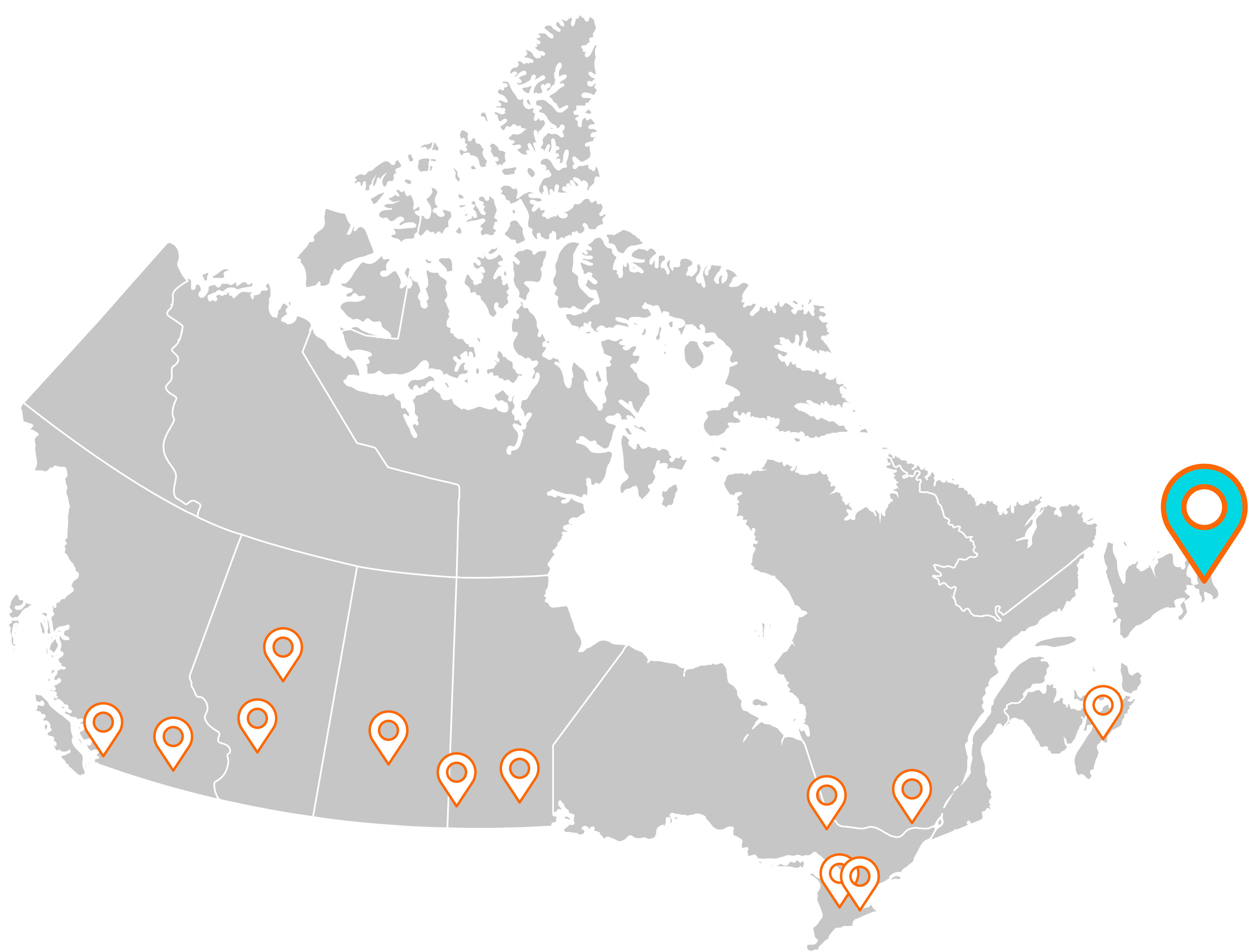Our final destination is St. John’s, the oldest city in North America. It served as a naval base during the American Revolutionary War and as a harbour for naval ships in the Second World War. St. John’s economy is anchored in fishing and the offshore petroleum industry. The colourful row houses on Water Street bring flocks of tourists to the city annually, and the East Coast Trail passes right through downtown. We dropped in (virtually!) to visit Aquafort AI Inc., who is providing valuable insight to the Atlantic and global fishing industry.
Growing up as a teenager in Zimbabwe before moving to Canada in 2006, Aquafort CEO and co-founder Bo Simango saw firsthand the impacts of food scarcity, drought and issues related to food security. Four years ago Simango saw this problem was still not being addressed in the aquaculture industry. He decided to do something about it.
Simango alongside co-founder Ali Alfosool found predictive analytics, machine learning, and artificial intelligence could help optimize the health of fish in the aquaculture industry as fish remain one of the lowest cost proteins available today.
As Aquafort is an Artificial Intelligence technology company, they provide advanced predictive data analytics to customers using proprietary Computer Vision and Machine Learning algorithms. Their technology is deployed non-invasively using data from pre-existing pre-installed environmental sensor and camera surveillance technologies.
By changing the way producers behave, Aquafort is helping to address fish health and welfare assessment information earlier and more reliably. This is the difference between highly volatile and inconsistent growth patterns and the desired elusive yield outcomes that affect revenue streams for farmers around the world.
One of the goals of the United Nations Sustainable Development Goals is to conserve and sustainably use the oceans, seas and marine resources. Their findings estimate the global market value of marine and coastal resources and associated industries to be worth $3 trillion per year.
A 2017 study on Marine Science by Grant Stentiford estimates $6 billion is the annual cost of aquaculture diseases. Companies also spend 30% of their production costs managing the health and welfare of fish populations.
More than half of the seafood consumed globally, (~160 million metric tonnes), grows in farms instead of being harvested from the wild. This makes Aquafort’s technology ever more important as this trend in the industry continues.
“Our core motivation is to fortify food security and support sustainable production by solving acute aquaculture production challenges,” said Simango.
Aquafort’s team helps identify environmental variability factors that affect fish growth and health earlier thereby saving fisheries and aquaculture facilities millions of dollars by reacting faster to preserve fish populations.
Initially starting with a focus on salmon, Simango has plans to monitor rainbow trout, sea bass, and other saltwater species. Their company is currently prospecting with early adopters and Simango hopes to make an announcement by the end of the fall.
“With the significant mortality events that have happened in the past, there is an opportunity for enhanced sustainable production through technology. We believe our platform can enhance sustainable production around the world,” said Simango.



